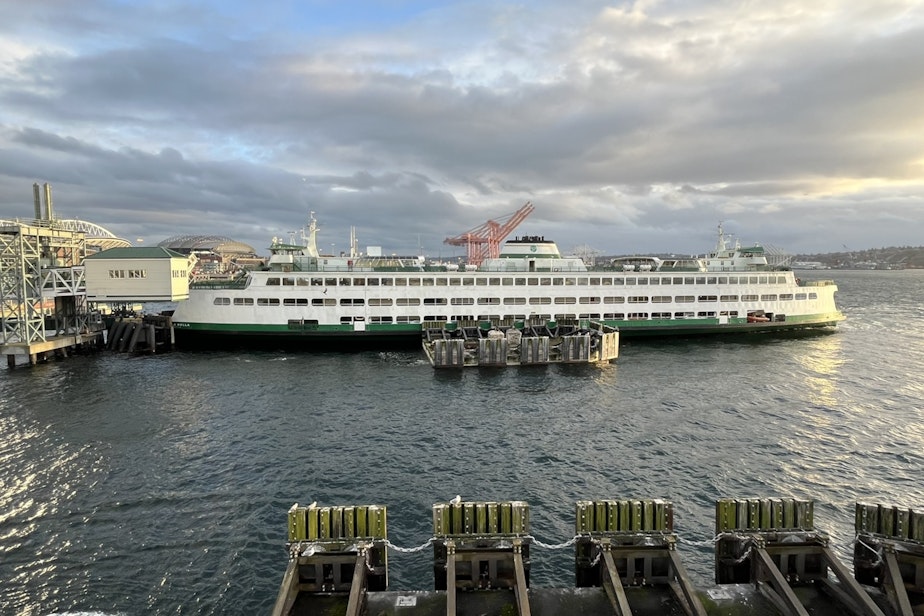The tricky business of charging Washington's coming hybrid electric ferries

With five new hybrid electric ferries out to bid last week, the boats themselves are getting a lot of attention.
But getting power to those boats is another challenge altogether.
Washington State Ferries dodged a bullet.
John Vezina, the ferry system's head of planning, recalled that some time ago, ferry officials told the City of Seattle how much power they'd need at Colman Dock to charge the coming hybrid electric boats; the new ships are expected to come online starting in 2028.
RELATED: A sneak peak at Washington's planned hybrid electric ferries
When it happened, Seattle was in the process of upgrading its seawall.
Vezina said city officials told the ferry folks that if their request had come one week later, that would have been too late. Seawall work would have made such an electrical connection much more expensive.
Sponsored
But luck ruled the day, and the city was able to slip the work in.
Now, there's power waiting in an underground vault just south of Colman Dock at Pier 48. All the ferry system has to do now is run a very thick cable — about the diameter of a softball — up the street or, more likely, along the sea floor to the unfinished corner of Colman Dock known as the Southwest Notch. From there, switches will someday route power to the ferries. The power vault has already proven useful. An underwater cable from the vault brings dockside power to cruise ships, so they don't have to run pollution-emitting engines in order to generate power while docked.
RELATED: Could opting for diesel-powered over electric ferries get Washington new boats faster?
Steve Nevey, the head of the ferry system, said every ferry terminal presents a different sort of puzzle when it comes to installing charging equipment.
"Like this terminal here is Colman Dock, it's in the middle of downtown, in an urban area. The Fauntleroy terminal’s in the middle of a neighborhood," he said. "It's just a different challenge set each time."
Sponsored
For one thing, there are many different power utilities to work with. And there are unrelated construction sites nearby, over which the ferry system has no control.
"They are contacting us like, 'Hey, make sure when you run the cable down here, you're taking into account that we're going to build something over here and we're going to need power, too,'" Nevey said.

One reason it's so complicated is that the ferries use so much power. The Bremerton boat, for example, will have the same battery capacity as 230 electric cars. Plus, it will have to charge fully within 18 minutes, so there's no delay in the ferry's departure schedule.
While that may seem aggressive today, improvements in battery technology could make even faster charging possible in the future.
Sponsored
RELATED: A power move: Northwest companies charge toward battery tech revolution
Matt von Ruden, who's in charge of ferry electrification for the state, said Colman Dock must be prepared to charge two ferries simultaneously — one bound for Bremerton, one for Bainbridge Island.
"And the interesting part is once we get power out to the slips, we have to have an automated charging system without crew members involved because of the high voltage," von Ruden said. "We want to make it automated. We want to make it repeatable and fast."
That means using a robotic arm to reach out to ferries and plug them in when they dock. The robotic arm must account for ship movement, tides, and other factors.
As von Ruden stood at Colman dock on March 3, a spring storm brought in heavy gusts of wind. A ferry rocking gently in those heavy winds, "would probably be at the limit" the robotic arm could handle, he noted.
Sponsored
That's fine, though, he said; the ferry doesn't technically need to be charged each time it lands. If stormy weather prevents a boat from charging all day, it can rely on its diesel engines as backup.




